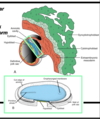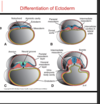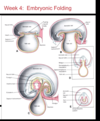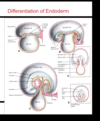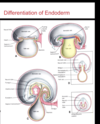Embryology Flashcards
(133 cards)
Prenatal period
The period of gestation is prior to birth
Perinatal period
22 weeks gestation to 28 days after birth
Postnatal period
after birth
neonatal period
up to 1 month after birth
infancy
first postnatal year
childhood
12 months to 12-13 years
Puberty
10-15 years (girls); 12-17 years (boys)
Adolescence
3-4 years post puberty
adulthood
from 18-25 years to..
What is the estimated pregnancy length for clinicians, and patients?
Clinicians: 40 weeks, patients: 9 months
What are the 3 stages of embryonic development from a clinicians point of view, and an embryologists?
Clinicians: first, second and third trimester. Embyologist: preimplantation, embryonic, fetal stage
What happens during week one of the prenatal period?
Preimpantation stage: zygote, morula, blastocyst
What happens during week 2 of the prenatal period?
inner cell mass forms bilaminar embryo
What happens during week 3 during the prenatal period?
Bilaminar embryo becomes trilaminar embryo
What happens during week 3-8 during the prenatal period?
Embryonic period- organogenesis
What happens during week 9 to term during the prenatal period?
Fetal period- grown and differentation
During what time in development is it considered the “all or nothing” period?
The first 2 weeks
What stage of development is most susceptible to teratogenic agents?
The embryonic stage, also termed the “critical period”
What stage is most likely to produce minor structural defects or functional abnormalities?
The fetal period
Gestational age (GA)
The age of the embryo/fetus from the presumed first day of the last menstrual period- clinical notion
Fertilization age
the age of the embryo/fetus from the fertilization day- not used as much in clinic
Whats the relationship between fertilization age and gestational age?
GA is approx. 2 weeks longer than fertilization age because the oocye is not fertilized until about 2 weeks after last menstrual period (around ovulation time)
Naegele’s rule
First day of the LMP subtract 3 months then add one year and one week , so LMP- 3 months + 1 year + 1 week
What percentage of women deliver on their due date? What percentage deliver within 13 days of their due date?
5% due date, 60-70% within 13 days






































